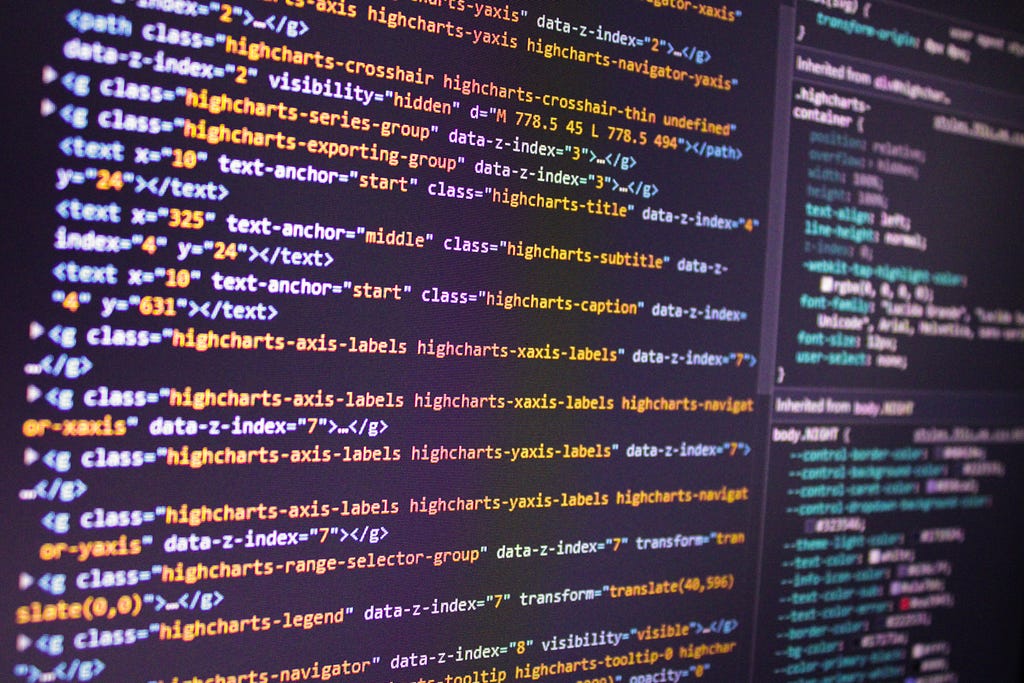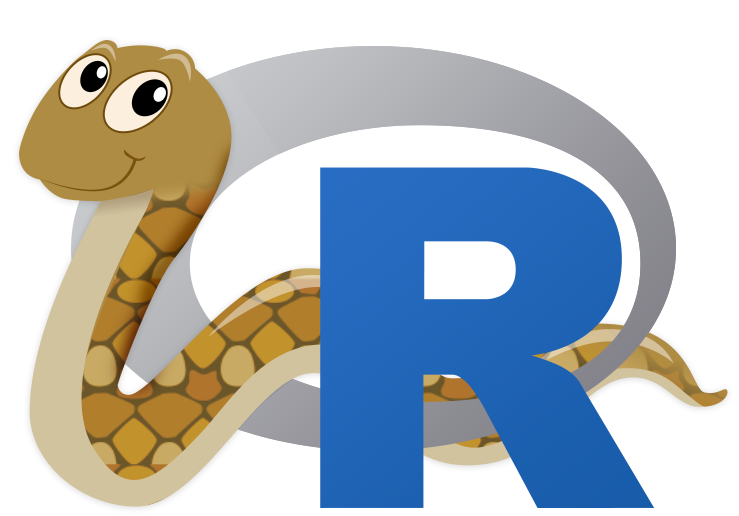
What Do You Prefer? Python or R? Why Not Both?
Last Updated on March 17, 2021 by Editorial Team
Author(s): Kunal Ajay Kulkarni
Programming
Data is everywhere. The amount of data we’re generating every day is enormous. According to a report by Forbes, we’re generating 2.5 quintillion bytes of data each day. The main reason behind this is that more than 3.7 billion humans are using the internet every day. Therefore, Data Science & Machine Learning are considered two of the most advanced and in-demand technologies of this century.
This ever-rising demand for data scientists and machine learning engineers has forced everyone to learn the programming languages required for these technologies. Be it about recommending movies on Netflix, spam filtering, critical business decisions, or forecasting weather. All of these situations involve a multidisciplinary field of Computer Science, Statistics, Algorithms, and Systems to extract meaningful insights from the data. So we need programming languages that can easily cater to all these needs of data science and machine learning.
Although there are many programming languages for fulfilling the given purpose, Python and R have been consistently used as favorite tools for data science and machine learning operations. This blog post covers how these two languages can be used to make a successful career in data science and machine learning. Also, we will look at some of the most widely used libraries to carry out data science and machine learning tasks. These are the languages you would want to learn for a successful career in data science and machine learning.

Here is the list of topics that we will cover in this article —
- Introduction to Data Science and Machine Learning
- Why Python and R are essential for learning Data Science and Machine Learning?
- Python libraries for Data Science and Machine Learning
- R libraries for Data Science and Machine Learning

Introduction to Data Science and Machine Learning
When I first started my research about data science and machine learning, the first question came to my mind was why there is so much hype around machine learning and data science?
After researching and going through a lot of articles on the internet, I realized that this has a lot to do with the amount of data that is being generated by netizens every day. Data is the fuel required to drive machine learning models, and since we are living in this era of Big Data, it is a no-brainer as to why Data Science is the hottest job of the 21st century!
I would say that Data Science and Machine Learning are two of the most important skills and not just technologies. These skills are needed to extract meaningful insights from a large amount of data to gain a competitive advantage.
Data Science is the field that involves extracting meaningful information from a large amount of data to solve real-world challenges. Machine Learning is the branch of computer science that gives machines the ability to learn without being explicitly programmed.
Why Python and R are essential for learning Data Science and Machine Learning?
Python —
As a beginner, you know that your journey to learn data science and ML begins with programming languages you need to learn. Among all languages available, Python is the number one choice for Data Scientists. Python is the most popular programming language used by most programmers throughout the world. So what makes Python so popular? Let us first understand why Python is the first choice for most of the Data Scientists and Machine Learning Engineers out there.
Python is a general-purpose programming language, which means it can be used in the development of the web as well as desktop applications. It’s also useful in the development of various numeric and scientific applications. With this sort of versatility, it comes as no surprise that Python is one of the fastest-growing and widely used programming languages in the world.
Also, Python is easy to learn and it uses simple syntax. It is one of the easiest languages to start your journey as a data scientist or MLE. There are multiple factors that give Python this flexibility over other languages, such as –
- Python is open-source and it is free to use across all operating systems
- It requires less code
- Python is the most productive language
- There is no limit to the things you can do with Python
- It has a vast community
- Python can easily run on multiple independent operating systems such as Windows, Linux, Unix, and macOS.
Python has hundreds of in-built libraries and frameworks to successfully develop, test, train, and implement various complex machine learning and deep learning algorithms. So, if you want to train a dataset, you can just install them with a single command, which saves a lot of time. These libraries are mainly focused on machine learning, big data, and data science. Some of the examples are Pandas, NumPy, Matplotlib, Seaborn, SciPy, Keras, TensorFlow, PyTorch, and so on.
Another reason for choosing Python is that it has a huge and active community. It has multiple groups, forums such as StackOverflow, Slack, and Kaggle if you have any problems. You can always ask for help on these platforms if you are stuck anywhere in your journey.
Now you know that why Python is the most popular language for data science and machine learning, let us look at the R programming language.

R –
We all know that the exponential increase in data has led to the exponential rise in demand for skilled data scientists worldwide. So, those who are interested in learning data science and ML may be interested in learning the R programming language. R is one of the most important tools for Data Science and ML. It is a highly popular programming language and is the first choice of many statisticians and data scientists. But what makes R so popular and demanding? Why and How to use R for Data Science?
Let's look at some of the salient features of the R programming language –
- R programming language was developed by Ross Ihaka and Robert Gentleman in 1995 at the University of Auckland in New Zealand, where the name “R” was derived from the first letters of their names.
- R is free and open-source software. Its open interface allows users to integrate with other applications and systems.
- As a programming language, R is object-oriented, it has various operators and functions that allow users to explore, and visualize data.
- R is used to collect, store, clean, analyze, and visualize data. It can also be used for data analysis and statistical computing.
- R has various graphical and statistical capabilities. It can be used for classification, clustering, and linear and non-linear modeling.
- R has a collection of over 10,000 packages in its CRAN repository.
- Like Python, R also has a large community. It has multiple groups, forums such as Stack Overflow, Slack, and Kaggle if you have any problems. You can always ask for help on these platforms if you are stuck anywhere in your journey.
R mainly focuses on its statistical and graphical uses. When you learn R for data science, you’ll learn how to use the language to perform statistical analyses and develop stunning data visualizations. R’s statistical functions also make it easy for users to clean, import, and analyze data.
R is equipped with an Integrated Development Environment (IDE). According to GitHub, having an IDE makes it easier to write and work with software packages. RStudio is a simple and unique IDE for R that improves the accessibility of graphics and includes a syntax-highlighting editor that helps with code execution. This may come in handy as you begin to learn R for data science.

So, what are the major differences between Python and R?
As we know, both Python and R have large software ecosystems and vibrant communities, so either language is suitable for almost any data science and machine learning task. But, there are times, when one language is more suitable or stronger than the other.
Where Python excels R –
Python is often praised for being a general-purpose language with its easy-to-understand syntax. Most of the machine learning and deep learning algorithms are being developed in Python with tools such as TensorFlow, Keras, and PyTorch. There are multiple resources available on the internet to learn how to do this. Python has an edge over R in deploying ML models and algorithms to other pieces of software. It is a primary language for machine learning workflows.
Where R excels Python –
R is one of the programming languages that provide an IDE to collect, store, manipulate, analyze, and visualize data. It is the primary choice for many statisticians who wants to design complex statistical models for solving complex problems. A lot of statistical computing is done in R, so there is a wide variety of models to choose from. If you wonder about how to model your data in the best way, R is the better option.
The other advantage R has over Python is that its ability to create web applications using R Shiny. This helps people to develop web applications without having much technical experience. Python does have Dash as an alternative, but that’s still a work in progress.
The list above is never-ending and people debate endlessly on which tasks can be performed better in which language over another. Further, Python programmers and R programmers always tend to borrow some good ideas from each other. For example, Python’s plotnine data visualization package was inspired by R’s ggplot2 package, and R’s rvest web scraping package was inspired by Python’s BeautifulSoup package.
Also, there is an excellent language inter-operability between both Python and R. which means, you can run your Python code from R using reticulate and your R code from Python using the rpy2 package. This means that all the features present in one language can be accessed from the other. i.e. the R’s version of the deep learning package Keras actually uses Python. Likewise, rTorch uses PyTorch.

Some of the famous Python libraries used for Data Science and Machine Learning –
- Pandas (See Documentation)
- NumPy (See Documentation)
- SciPy (See Documentation)
- Matplotlib (See Documentation)
- Seaborn (See Documentation)
- Scikit learn (See Documentation)
- Statsmodels (See Documentation)
Famous R libraries used for Data Science and Machine Learning –
- Dplyr (See Documentation)
- Ggplot2 (See Documentation)
- Tidyverse (See Documentation)
- Lubridate (See Documentation)
- Shiny (See Documentation)
- Knitr (See Documentation)
- Rvest (See Documentation)
- Data tables (See Documentation)
- Caret (See Documentation)
- R Markdown (See Documentation)
- RMySQL (See Documentation)
- RSQLite (See Documentation)
Conclusion –
Wrapping-up, both R and Python are free, and open-source programming languages that have been used by programmers and software developers worldwide. Though it may be very hard to know whether to use Python or R for data science and machine learning, we can say that both are great options. One language isn’t better than the other — it all depends on the user’s perspective and his or her needs. These languages are sometimes used by different individuals and businesses based on their requirements.
In terms of R and Python IDEs, the R’s IDE is ideal for data manipulation, graphing, and statistical computing. Some Python applications include web development, numeric computing, and software development. Additionally, while R has numerous packages, Python has many libraries devoted to machine learning.
It doesn’t matter which language is better, being proficient in both languages can be very useful in data science and ML. In fact, RStudio notes that many data science teams around the world are “bilingual,” using both R and Python.
Thanks for reading!
What Do You Prefer? Python or R? Why Not Both? was originally published in Towards AI on Medium, where people are continuing the conversation by highlighting and responding to this story.
Published via Towards AI














